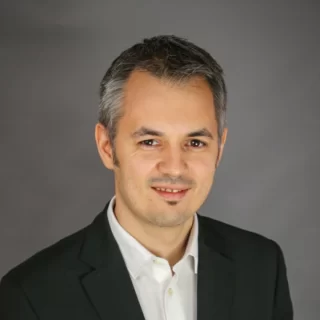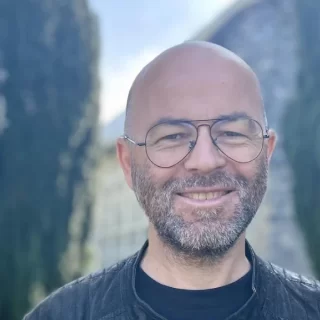In the search for meaning, catharsis, and understanding of personal and collective experiences after wars, societies turn to memorial practices seeking refuge from forgetting and unforgetting. Memorial practices and the culture of memory (and forgetting) they create clearly communicate the stage of confrontation with the wartime past that a post-conflict society is in and the symbols, ideas, and values on which it wants to build the identity of future generations.
The Siege of Sarajevo began on April 5, 1992, and lasted for a total of 44 months. It is known as the longest siege of a capital city in the history of modern warfare, during which over eleven thousand civilians were killed, a significant number of whom were children.
Memorialization practices in post-conflict societies are precise indicators of socio-political movements in the decades following the war, as well as those societies’ attitudes toward their own wartime past and (newly) built identity. Without a detailed analysis, it is evident that the memorialization of the Siege of Sarajevo over the years and decades after the war has served official institutions as a focal point for building and solidifying an identity based on national and/or local-patriotic unity and the undeniable position of the victim confirmed by international court verdicts.
The central and most media-covered event related to the commemoration of the 32nd anniversary of the beginning of the Siege of Sarajevo, titled “Path of Remembrance,” was organized by the Sarajevo Memorial Center (formerly the Sarajevo Canton Memorial Fund) in cooperation with the City of Sarajevo. The basic concept of this event involved laying out a long white surface along the central city street and promenade, on which over eleven thousand shoes were arranged, donated by citizens, public institution representatives, students, and teachers from primary and secondary schools of the Sarajevo Canton. The shoes were accompanied by informational panels and preserved items from various segments of wartime life and experience. On April 5, a procession led by the parents of children killed in the war started from the Memorial to the Murdered Children of Besieged Sarajevo 92-95, moving in a straight line along the installation through Titova Street, Ferhadija, and ending in front of the main stage in Baščaršija.
Each donated shoe represents one life lost during the siege, and the donation process itself is a symbolic act of identification with the victim, a symbolic assumption of the victim’s place, and a symbolic reliving and return to the shared public space to once again confirm their death. The number of shoes and the visual shock effect they produce are the focal points of the installation, clearly indicating that the organizers’ focus was on presenting the number of victims and, in the subtext, the magnitude of the crime suggested by the length of the path and the endless row of shoes.
The use of shoes in memorialization is a common motif, from “Shoes on the Danube Bank” by János Kan Togay, to exhibits with thousands of shoes of Holocaust victims in the USHMM in Washington, to closer examples like the “In the Steps of Those Who (Have Not) Crossed” installation at the Srebrenica Memorial Center. It is also interesting that a similar installation, titled “A Pair of Shoes – One Life,” was realized in Belgrade in 2010 by Women in Black, who organized it to mark the 15th anniversary of the genocide against Bosniaks in Srebrenica. This installation, in the context of the country where it took place, was a more direct and effective activist-artistic movement and provoked strong reactions.
When we consider the spatial context of this year’s memorial installation, we see that it directly and immediately communicates with many important existing memorial points related to the 1992-1995 war, the siege, and World War II, such as Sarajevo Roses, the Eternal Flame, and the City Market, entering into a dialog with them. Some of these memorial points were locations where additional programs were realized during the event, and the procession slowed down while passing by them. The procession stopped at six additional points, motivated by the intention to consider almost all major national and religious groups and to acknowledge their national and/or religious feelings evoked by images of suffering and pain during the ritual paying of respect to the victims, which was the main focus of the commemoration.
So the procession, besides its starting point, stopped at the Eternal Flame to commemorate the city’s antifascist tradition, at the City Market, in front of the Cathedral, at the Jewish Museum, next to the Gazi Husrev-beg Mosque, where flags with lilies were displayed, and at Baščaršija. At each location, appropriate secular or religious music was performed to evoke emotional exaltation.
Insisting on separate or distinct tributes for each national/religious group lessens the importance of the collective dimension of the siege experience, which is their shared experience. These commemorative (i.e., segregating) points were designed to counter that and prove their unique role as victims marked by national/religious connotations, as if a victim without such a mark does not count. It is clear that this practice was used primarily for ethnic and religious homogenization and utilizes its language.
In the context of the 32nd annual commemoration of the beginning of the siege, the most problematic fact is that the installation simultaneously honored civilian war victims and defenders – members of the Army and the Ministry of Interior of Bosina and Herzegovina. This should not be surprising given that the organizer is the Sarajevo Memorial Center, whose primary role, according to their website, is to preserve the dignity of the 1992-1995 defensive-liberation war – by affirming the image and work of martyrs and fallen fighters. Mixing civilian and military war victims and symbolically equating them in this year’s commemoration completely negates the message about the senselessness of war, which should be the necessary subtext of any memorialization aimed at creating a culture of memory oriented towards a future in peace. It is impossible to simultaneously honor innocent civilians who were killed by military action against their will or choice and those who carried weapons and participated in military actions – even if it was in defense or in our name!
The installation itself began and ended with a long row of black military boots. The beginning and end as strong points of any message or content are thus visually militarized, and the entire commemorative program remained at the level of ethnic and religious homogenization by invoking religious rituals and insisting on the separate symbolic representation of almost all major religious/national groups.
Unlike the ethno-homogenizing messages of the Path of Remembrance, the universal message about the weight of the collective experience of the Siege of Sarajevo, as well as the senselessness and suffering as the main product of warfare, was sent through the diverse program of the Memory Module 2024, which has marked the beginning of the siege since 1996. This year’s program opened with an exhibition of photographs titled “Sarajevo – City of Love and Suffering” by wartime photojournalist Danilo Krstanović of Oslobođenje, who was posthumously awarded the Contribution to Preserving the Culture of Memory Award on this occasion.
The exhibition consists of photographs taken during the four years of the siege of Sarajevo, showing everyday life and the complexity and multilayered experience of life under siege, depicting people and places in the context of destruction caused by military action, but also in the context of moral decay in terms of the international community’s responsibility and its failure to respond timely and adequately. The exhibition, titled based on the author’s interviews and set up in the Art Gallery of Bosnia and Herzegovina, presents all the suffering, pain, losses, but also the strength, resilience, love, and solidarity that were nourishment in times when it was hard to come by the real thing.
Krstanović’s photographs were juxtaposed with photographs of support for the people of Palestine from recent protests during the exhibition opening, and this year’s Memory Module poster was written in the colors of the Palestinian flag. This puts memory in the function of sending a message of support, solidarity, but also a warning cry. This shows how, unlike nationally colored memorial installations and setups, free art as a medium is in constant dialogue with the present, focused on the here and now, always engaged, pointing a finger at the world as it is today and its crimes, ready to warn, sharply condemn, and bravely open space for discussion.
One of the more notable projects of this year’s commemoration of the beginning of the Siege of Sarajevo is the documentary film “Shoot, I’m Still Teaching” produced by Federal Television and directed by Arijana Saračević-Helać. Focusing entirely on education in the city under siege, told from the perspective of former teachers and students, this project, through individual interviews and fragments of various memories, gradually creates a picture of wartime Sarajevo with its basement classrooms where the educational process continued to take place, abruptly halted at the beginning of the war. The project highlighted somewhat different heroes and heroines – teachers and professors who invested their last strength and almost non-existent resources to provide hope for a better tomorrow for the children in besieged Sarajevo and create drops of normalcy in a sea of madness and violence surrounding them.
The symbolic name of the film creates a direct link between the Siege of Sarajevo and the experiences of Sarajevo children with World War II and the execution of students from the all-boys high school in Kragujevac on October 21, 1941, by fascists when their teacher, taken out of school with the students, refused the murderers’ offer to spare him from death and stood in line with his students, dying together with them. The last words spoken by the teacher Miloje Pavlović, “Shoot, I’m still teaching,” became part of our culture of memory, and the documentary film by Saračević-Helać symbolically connected with the ideas of antifascist struggle and education as the safest path to peace.
The culture of memory created based on artistically well-designed projects, like the two previously mentioned, is always collectivist, but not in the way nationally or religiously colored projects are. Instead, it points to the collective through the individual/personal and, in terms of the values it advocates, to the universal! The memorial practices arising from them create direct links with observers, placing before them material for reflection and questioning, not seeking repetition and identification, but understanding and action, while clearly pointing to the invincibility of life and the human spirit.
Merima Ražanica is the coordinator of educational programs at the War Childhood Museum in Sarajevo, where she creates and implements content for the museum’s peace education program. She is a long-time collaborator of “Školegijum,” a magazine for fair education, and the recipient of the Peace Curator Prize by the Balkan Museum Network for 2024.




